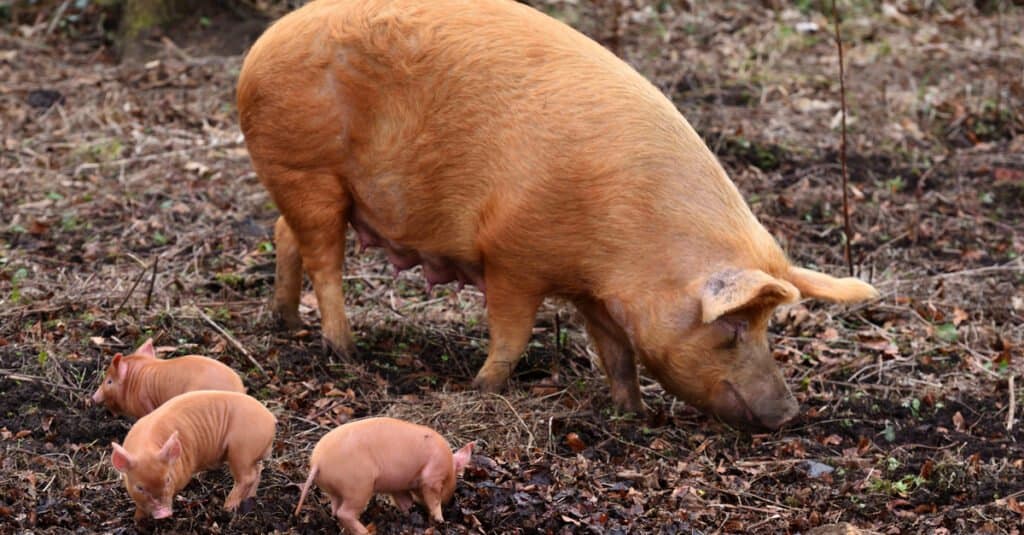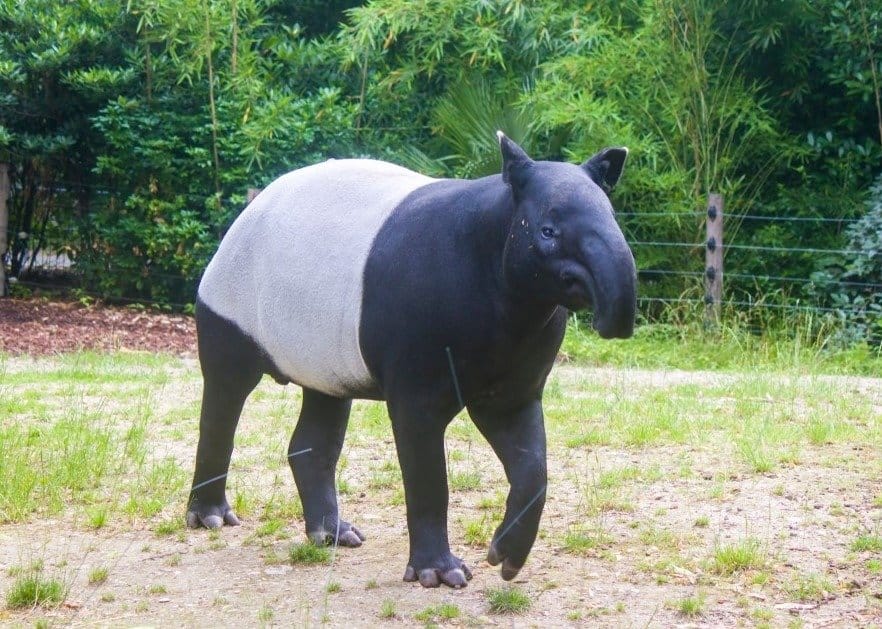The term ungulate is used widely to describe a range of animals but there is a lot of confusion about what exactly it means. So, what is an ungulate? Here we’ll provide a clear explanation and share some cool facts and examples too!
What Are Ungulates? – The Science
The term Ungulata has been used traditionally to describe a group of animals that contain some, but not all, descendants of a common ancestor from whom all the hoofed animals alive today arose. There are two groups of hoofed animals namely the Artiodactyla (called the cloven-hooved mammals) and the Perissodactyla (called odd-toed mammals).
However, this common ancestor also gave rise to several groups of animals that don’t have hooves. This includes elephants, manatees, whales, and dolphins!
So, we use the more convenient term ‘ungulates’ to describe only the animals that have what scientists call digitigrade locomotion which means walking or running on their toes and have enlarged nails/claws that have formed hooves.
Five Incredible Ungulate Facts
- Many ungulates migrate – they move from one area to another seasonally to take advantage of the best grazing conditions. The great wildebeest migration in Africa is one of the most impressive sights on earth.
- The largest (but now extinct) land mammal of all time was an ungulate. It was the mighty Indricotherium which was over 18 feet in height.
- Ungulates can also be tiny – the chevrotain (also known as the mouse deer) was recently rediscovered in Vietnam and typically weighs less than 10 pounds.
- Many ungulates like to wallow! You can spot rhinos, bison, and deer rolling around in mud to keep cool and remove parasites.
- On the whole, ungulates are herbivores but that is not the whole picture. Pigs have developed into omnivores and a prehistoric ungulate species, the mesonychians, were carnivores.
Cloven-Hooved Ungulates – Top Examples
The Artiodactyla is largest group of ungulates with over a hundred living species and some very well-known members. Here are just a few of them.
Sheep

When sheep walk on their hooves they are actually walking on tip-toe.
©patjo/Shutterstock.com
Sheep were one of the first and most successful of our domesticated animals. They are reared in numerous countries and they can live for up to 10 years. Anatomically speaking, sheep walk on two toes split evenly down the middle. Our domestic stock can trace their ancestry back to wild mouflon which is a type of wild sheep that still lives in the mountains of Asia and Europe.
Goats

Specially adapted hooves help goats traverse rough terrain.
©Jasmin Künzli/iStock via Getty Images
Goats are closely related to sheep but have evolved to travel across rugged and steep terrain. They are excellent climbers and have a two-toed hoof that is specially adapted to help them balance on narrow ledges. Originally domesticated around 10,000 years ago, there are around 300 distinct domestic breeds as well as wild goats.
Pigs

It is unusual for ungulates to be omnivores.
©Mike Russell/Shutterstock.com
Pigs also walk on two toes and their other toes are reduced. They have been domesticated for thousands of years and are reared all over the world except for in Antarctica, North Africa, and far-northern Eurasia. There are around 60 million farmed pigs in the US alone. These are unusual ungulates because they are not ruminants and do not just eat vegetation – they are omnivores.
Deer

Spindly legs and hooves mean that deer can run fast.
©PatrikStedrak/iStock via Getty Images
Deer also have hooves made up of two toes. There are around 40 different species of deer alive today and they are found in Asia, Eurasia, Europe, and North America. Their spindly legs mean that they can run fast and the males grow antlers which are bone coated with skin. Deer are social animals who live in groups and thrive in forests and grasslands.
Odd-Toed Ungulates – Top Examples
The Perissodactyla, or odd-toed group, contains only 17 living species. They are divided into the following three sub-groups.
Horses

The horse’s hoof is actually one large toe.
©Sebastian Frank/iStock via Getty Images
The hoof of a horse is essentially a single enlarged toenail but some extinct horses walked on three. There is only one species of domestic horse but that contains over 300 breeds! They have long manes, long necks, and one large toe which is the hoof. Horse hooves are normally black but white horses can have white hooves.
Rhinoceroses

Rhino hooves are made of three toes.
©CamiloRico_graphy/Shutterstock.com
The rhinoceros is a native animal of Africa and Asia but three of the five rhino species are critically endangered. They are the second largest land animal on earth and have a robust, cylindrical body. Whilst they do not have the spindly legs associated with most ungulates, they are not slow either. Rhinos can reach 35 miles per hour when they are charging. Their hooves are made up of three toes and the other toes are completely lost.
Tapirs

Tapirs have three-toed hooves.
©Danny Ye/Shutterstock.com
Tapir hooves are also made of three toes but the other toes are reduced. This ancient species has been on the Earth for over 30 million years but is now limited to Central America, South America, and Asia. They can be six feet long, weigh 800 pounds, and have a distinctive curved snout called a proboscis that is flexible and can be moved in all directions.
What Are Typical Ungulate Features
Many hoofed ungulates live in grasslands and savannahs where they survive by eating vegetation. As large herbivores, they are an ideal target for many predators and so being able to run fast is a very useful skill! Therefore, many ungulates have long legs to increase running speed. Digitigrade locomotion (running on their toes) helps them run even faster.
Ungulates also often have large, grooved molars to grind down tough grasses and other vegetation.
Why Are Ungulates So Important?
Ungulates play a vital role in food chains and ecosystems in a wide range of countries. They are termed ‘ecosystem engineers’ because they modify their environments by trampling, grazing, pooping, peeing, rooting and wallowing. They also disperse seeds for many plant species and are a source of food for large predators. For thousands of years, domesticated ungulates have been a source of meat, milk, and skins/fur for human populations.
What Are Ungulates? – Summing Up
Ungulates are hoofed animals that evolved from the same ancestor. They move by digitigrade locomotion which means they run on their toes and have enlarged nails/claws that have formed hooves. Some, such as sheep, are cloven-hoofed ungulates whilst others, such as horses, are odd-toed ungulates. Hooves can be made up of one, two, or three toes. They play a vital role in food chains and in human food production.
The photo featured at the top of this post is © anjajuli/iStock via Getty Images
Thank you for reading! Have some feedback for us? Contact the AZ Animals editorial team.






